
Salty Sam’s Fun Blog for Children
Number 215
William Shakespeare
Hello Everyone

Bill and Bob went to the Rocky Bay library as usual this week and Bill brought back a book that caught his eye called The Tempest.
‘Tempest’ is another word for storm and it is a story about some people who have been marooned on an island for many years.
The story was written by a famous writer called William Shakespeare and the book Bill borrowed was a children’s version of the story. The original play was written in language that he would not have been able to understand but the story in his book was a story he understood and enjoyed.
Shakespeare wrote a lot of plays in his lifetime. They were comedies, tragedies and histories. A lot of the ideas for his stories he got from the legends and gossip heard around Warwickshire where he grew up.
Almost everyone studies Shakespeare at school but Bill and Bob are a bit young at the moment. A lot of his work can be found in children’s books though, and so it is possible for little children to enjoy his stories too.
Shakespeare is thought to be our best ever writer. The language he used was beautiful and the way he wrote was very clever.
He wrote plays and poems and he was an actor as well.
He became famous and also quite rich while he was still alive. But nowadays, he is an international superstar.
We don’t really know a lot about his life, but we do know where he was born and this house still exists.
Actually, you can visit the house in Stratford-Upon-Avon where you can find out that he had a very short bed (because people in those days had a habit of sleeping sitting up) and also that he had a very unusual taste in wallpaper!
![]()
The house still stands in the centre of town. Here Shakespeare lived as a child and young adult. He got married at the very young age of eighteen to a lady eight years older than himself called Anne Hathaway. Soon after, his first child, Susanna, was born.
So after Shakespeare got married, he continued to live with his five brothers and sisters in his father’s house, and also continued to help out in his father’s leather glove making business. Gloves were worn a lot in the Tudor Era.
There were times when money was short, and so the young William decided to seek fame and fortune to make a better life for himself.
At the age of twenty eight, he moved to London and worked in Southwark which is just south of the River Thames. ln those days this area was the theatre land of London. There were many other entertainments to be found there too like bear-baiting and cock-fighting. ln fact, the area was quite seedy.
Theatres in those times were considered to be very low-class entertainment and were not allowed to exist inside the City of London – so they were banished to the outer edges. This is why they were built on the other side of the river from the City of London – on the South Bank.
lt is thought that Shakespeare wrote about two plays a year and was paid £6 for each of them. Some of his story lines may have been heavily influenced by other stories written before this time and his histories were not always historically accurate – but the monarch of the time would know about his plays and it was never a good idea to upset them. So Shakespeare often made the royal family’s past enemies into villains.
As he became successful, Shakespeare decided to buy a house for himself and his family back in Stratford-Upon-Avon. So at the age of thirty three he bought a large house with a big garden called New Place.
lt was the grandest house in town, with a gatehouse and a courtyard. lt had a very large garden at the back with barns and plenty of room to keep animals. There was possibly a brew house where the servants made ale and beer for the household. This beverage was much safer to drink than water in Tudor times. The water was boiled in the brewing process which made it safe to drink.
There were many servants too with their own living quarters and family life was comfortable.
The house cost £120.
Shakespeare’s plays were staged in a theatre in London called the Globe. Another famous playwright of the era was Christopher Marlowe and his plays were shown in the Rose Theatre which was nearby.
ln earlier times, theatre stages were set up on a wagon drawn into a town square or a field.
ln Shakespeare’s time, having an enclosed theatre meant an audience had to pay to come in, and with two and a half thousand to three thousand people able to cram into the seats and the standing place just in front of the stage, this generated the theatre company a good income.
These Tudor theatres no longer exist, but The Globe was rebuilt in a slightly different place from the original in recent times. lt needed special permission to have a thatched roof because they are illegal in London after the big accident of 1666! A row of sprinklers have been built in along the ridge of the roof – just in case.
And Shakespeare’s plays are once again staged in this new version of the Globe Theatre.
Shakespeare wrote his last major play, The Tempest, in 1610 and went back to live in New Place in his early fifties.
lt is thought that Shakespeare was born in 1564 and died on his birthday on 23rd April 1616. He may have died of typhus which is a disease you get from unclean water. There was a stream in his garden.
He left his house to his eldest daughter who probably continued to live in it with her mother.
He was buried in the local church, Holy Trinity Church where he had been baptised as a baby.
New Place no longer exists, but if you ever visit Stratford-Upon-Avon, not only can you visit Shakespeare’s birth place but you can also visit Anne Hathaway’s cottage – and Mary Arden’s farm which is now a living museum. That means that you can see how Tudor people lived. You can learn about: what they wore, how they kept warm, what they ate and how they cooked their food.
So next time you go to the Library, why don’t you look out for a story written by William Shakespeare – and l hope you enjoy it.
Bye bye everyone – don’t forget to subscribe to my blog!
lf you like my blog, please support it by telling all your friends and followers about it.
Thank you!
And see you again next Fun Friday!
Love and kisses
Salty Sam

www.christina-sinclair.com


Bill and Bob’s Joke of the Week![]()
![]()
Bill: A customer goes into a bookshop and says to the shop assistant, “Have you got Shakespeare’s Hamlet?”
And the shop assistant says, “l’m not sure sir, when did he order it?”
Bob: Ha ha ha!

Salty Sam © Christina Sinclair 2015
Unauthorized use and/or duplication of material from this blog without express and written permission from this blog’s author and owner is strictly prohibited.
Links may be used to www.christina-sinclair.com

Picture Gallery
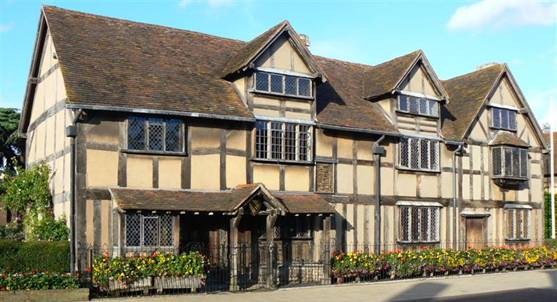 William Shakespeare’s House at Stratford upon Avon,
William Shakespeare’s House at Stratford upon Avon,
(By John – originally posted to Flickr CC BY 2.0)
 The Globe
The Globe
(CC BY-SA 3.0, https://commons.wikimedia.org/w/index.php?curid=228020)
 The reproduction of Shakespeare’s Globe Theatre is situated a few metres from the site of the original
The reproduction of Shakespeare’s Globe Theatre is situated a few metres from the site of the original
 It is the only building allowed to have a thatched roof in London since The Great Fire of 1666 –
It is the only building allowed to have a thatched roof in London since The Great Fire of 1666 –
you can see the sprinklers along the top
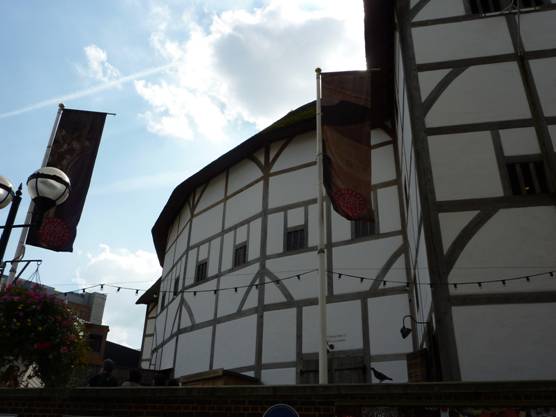 The Globe Theatre – the modern version you can visit today
The Globe Theatre – the modern version you can visit today
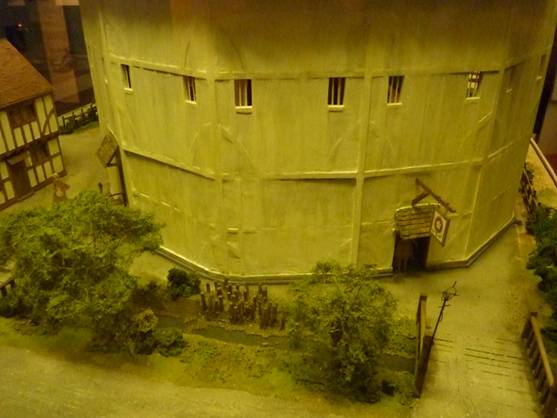 Shakespeare’s Globe Theatre as it was
Shakespeare’s Globe Theatre as it was
(A beautiful model to see at the Museum of London)
 A Shakespeare play on stage and galleries full of people watching
A Shakespeare play on stage and galleries full of people watching
(kids.britannica.com)
 The Anchor Pub – Shakespeare’s local
The Anchor Pub – Shakespeare’s local
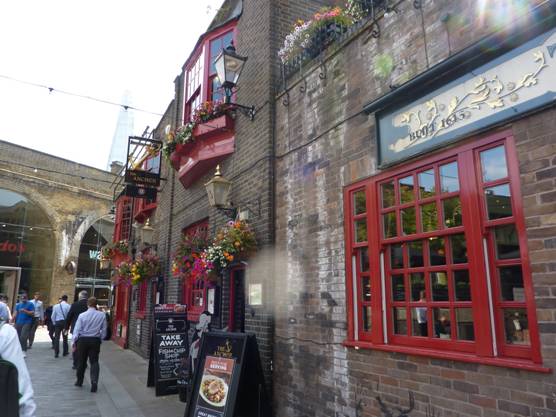 The Anchor on the South Bank
The Anchor on the South Bank
 Anne Hathaway’s Cottage
Anne Hathaway’s Cottage
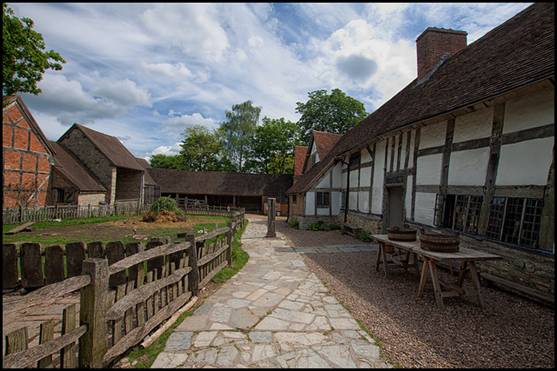 Mary Arden’s Farm
Mary Arden’s Farm
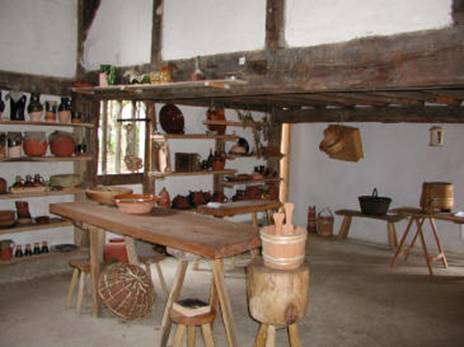 Brewing was done for each household in Tudor times if they had room
Brewing was done for each household in Tudor times if they had room
(pirtonhistory.org)


 THE SALTY SAM NEWS DESK
THE SALTY SAM NEWS DESK

This week, I have some more of Bill and Bob’s Scrabble words that they are learning in their quest to beat Auntie Alice at Scrabble…
How many of them do you know?

- Yam – a climbing plant
- Yare – ready
- Yarrow – a flowering plant
- Yaw – to swerve suddenly in a ship
- Yawl – a boat carried on a small ship
- Ye – a pronoun
- Yea – same as yes
- Yearn – to long for something/to want something really badly
- Yelp – a sharp cry
- Yeoman – a gentleman farmer
- Yew – a tree
- Yield – a harvest
- Yodel – a kind of singing
- Yoke – a bar to help carry loads or to couple ploughing animals together
- Yore – a long time ago
- Xanthin – a yellow colouring matter
- Xebec – a type of ship
- Xylem – woody tissue in a plant
- Xyst – a court
- Xyster – a surgeon’s instrument

Yarrow

A yoke

A yoke

A yoke

Xebec – sometimes used by pirates
And if you like playing with theatres here is a really cute finger puppet theatre that should fit onto your hand.
You can draw faces on your finger tips or use the finger puppets from Blog Post 86.
You can even make some scenery for your theatre if you like.
Glue a picture onto the top of a piece of card (10.5cm by 8cm) and slot the card into the back of the theatre. Hold the card in place with a length of sticky tape rolled onto itself with the sticky side outwards at each top corner.

NEWSDESK MINIMAKE
FINGER PUPPET BOOTH
You will need 1 sheet of plastic canvas 7 mesh
10.5 inches x 13.5 inches/26.7cm x 34.3cm
Cut some panels as follows:-
1 front 14 holes by 23 holes
2 sides 11 holes by 30 holes
1 back 23 holes by 30 holes
1 top 11 holes by 23 holes
Work a white panel of 4 rows in tent stitch across the top of the front
Work red and green vertical stripes 2 rows across in tent stitch on all the panels
Sew the sides and top to the back using yellow yarn
Sew together the top corner edges to sew the top to the sides
Make an inner skin as follows:-
1 front 14 holes by 21 holes
1 back 21 holes by 29 holes
2 sides 10 holes by 29 holes
1 top 10 holes by 21 holes
Sew the sides and top to the back (3 edges) only using white yarn
Push the inner skin into the booth once the booth is sewn together

TO MAKE UP
- Sew around the front of the booth using yellow yarn sewing the inner and outer canvas panels together as you sew and also incorporating the front – this will be three thicknesses of canvas
- Sew around the bottom edge incorporating the inner skin of the front as you sew – you will sew through just one thickness of canvas at one hole each end of the front panel
- Sew along the top of the front incorporating the top of the front inner panel – you will sew through just one thickness of canvas at one hole each end of the front panel



*********************
TO ADVERTISE ON THIS BLOG
PLEASE CONTACT:
christina.sinclair.ads@aol.co.uk
*********************


Quick Quiz
Unmuddle these letters to find some of Shakespeare’s plays…
- het petemts
- mehlat
- moore dan tujlie
- mermdisum githsn radem
- nigk real
- wetthlf ginth
- het nramtech fo niveec
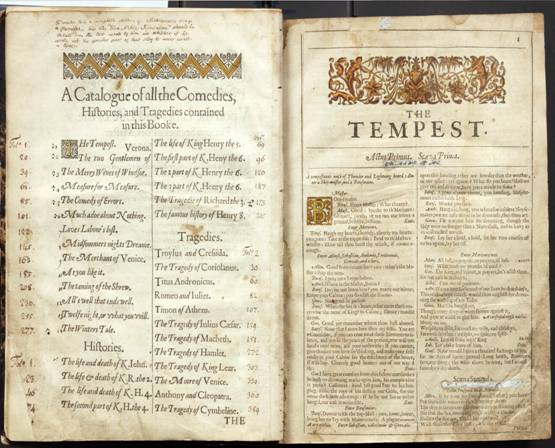



lt’s the Weekend!

HOW TO MAKE GNOME FlNGER PUPPETS
These lovely puppets were made out of the same rainbow yarn used to make the knitting bag in Blog Post 210 – so that different coloured puppets were made out of one ball!
However, you can make them out of tiny amounts of yarn left over from making other things.
FINGER PUPPET BODY (KNIT ONE)
Using 4mm knitting needles and coloured dk yarn cast on 12 stitches
Knit 4 rows in garter stitch
Knit 11 rows in stocking stitch
Knit 1 row
Change to white dk yarn
Knit 6 rows of stocking stitch
Don’t cast off – leave a length of yarn for sewing up and put this through the stitches on your needle
ARMS (KNIT TWO)
Using 4mm knitting needles and coloured dk yarn cast on 6 stitches
Knit 2 rows in garter stitch
Change to white
Knit 2 rows in stocking stitch
Don’t cast off – leave a length of yarn for sewing up and put this through the stitches on your needle
HAT (KNIT ONE)
Using 4mm knitting needles and coloured dk yarn cast on 12 stitches
Knit 2 rows of garter stitch
Knitting in stocking stitch decrease 1 stitch at the beginning of every row until 1 stitch remains
Cast off

TO MAKE UP
- Pull the yarn at the end of the hands to close them up
- Sew the underarm seam with right sides together using the appropriate colours along the seam using over-sew stitching then turn the arms the right way out – if this is too difficult for you then sew the arms up with wrong sides together
- You won’t need to put stuffing in the arms – just tuck the ends of the yarn into the arm to pad them
- Pull the top of the head in
- Secure the yarn and use it to sew up the seam at the back of the head
- Then push the end of the yarn through to the outside of the back of the neck
- Sew the back seam with the coloured yarn
- Squash the body flat with the seam at the back
- Sew the arms to the side of the body by laying the arm across the chest and then sewing across the top of the arm and the side of the body
- Stuff the head
- Bring the length of white yarn left at the back of the neck around the neck and pull in tightly a couple of times – then secure the yarn
- Embroider a face on bringing your needle in from the base of the back of the neck – or sew a face on before construction
- Sew up the hat with wrong sides together and place on the head – you can catch stitch it on at the back of the neck if it keeps falling off
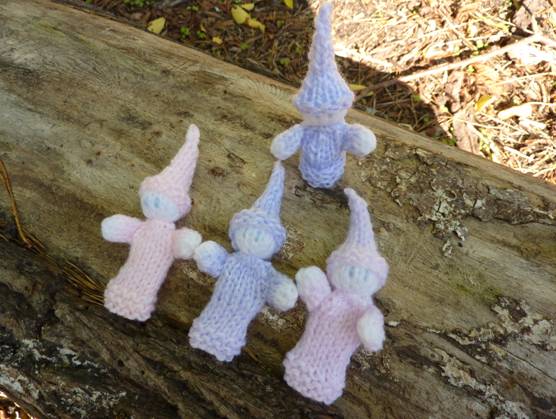


Please note that the material on this blog is for personal use and for use in classrooms only.
It is a copyright infringement and, therefore, illegal under international law to sell items made with these patterns.
Use of the toys and projects is at your own risk.
©Christina Sinclair Designs 2015


Quick Quiz Answers
- The Tempest – het petemts
- Hamlet – mehlat
- Romeo and Juliet – moore dan tujlie
- Midsummer Night’s Dream – mermdisum githsn radem
- King Lear – nigk real
- Twelfth Night – wetthlf ginth
- The Merchant of Venice – het nramtech fo niveec

Hamlet


